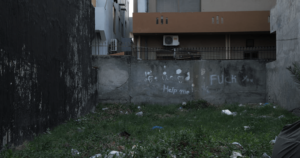Famine and drought are a country’s worst nightmare; introduce war to the mix, and we have a disaster! Unfortunately, in 2010-2011, Somalia didn’t just experience one but all three disasters, compounded by the existing conflict between non-state actors and the Government.
From Drought to Famine — a Direct Consequence of War
Before the ravaging famine, Somalia battled with severe drought, which was malignant at best. The drought was considered the worst in 60 years, leading to loss of lives, livestock, rapid harvest decline, retrogressive decrease in labor, and shortage of household incomes. Moreover, owing to the poor harvest, food prices quadrupled to sufferable levels. Soon, the drought metamorphosed into famine, as predicted by the Famine warning system.
The famine was the worst Somalia had experienced in over 25 years since the country’s 1992 famine. According to a study funded by the Food and Agriculture Organisation’s (FAO) food security and nutrition analysis unit for Somalia (FSNAU) and the famine early warning systems network (Fewsnet), 258 000 deaths were recorded in southern and central parts of Somalia between October 2010 and April 2012. About half of these populations were children under the age of five — 133,000 children are estimated to have lost their lives to the famine.
What turned the drought-related food crisis into famine was the conflict and insecurity that enshrouded Southern Somalia. This invariably hampered the shipment of food aid. In addition, the war was fueled by the Islamist group, Al-Shabaab, who were at loggerheads with the Government. As a result, the regions dominated by the group were the worst hit by the crisis.
Humanitarian Response
Humanitarian aid in the face of the Somalian crisis was poor. There was a significant decrease in humanitarian support between 2010 and 2011. As a result, donors were critiqued for their nonchalant response to the crisis. Fortunately, major donor appeals commenced in September and October. There was also a considerable drop in food prices, and the emergence of the rainy season in November birthed a significant reprieve to the embattled Somalians. Come February 2012, the United Nations (UN) declared a famine-free Somalia.
A Humanitarian’s Perspective
As Somalia’s humanitarian crisis raged on with no end in sight, Humanitarian professionals like Ahmed Alameldeen were deployed to aid the ongoing crisis. Ahmed was assigned to a field surgical hospital in Mogadishu, Somalia, where he executed his duties as a Pharmacist and Field Coordinator. The field hospital was the only surviving, available hospital in the city as Somalia’s health system had collapsed due to the dire situation. Ahmed and his team provided regular surgical operations for wounded civilians who were victims of the war between the Government and the armed non-state actors. They carried our surgical procedures like cesarian sections, fistula, osteo-related surgeries, amongst others.
One of Alameldeen’s primary assignments was collaborating with key humanitarian organizations and the UN to provide critical medical care for vulnerable Somalians. They sponsored the referral and transportation of patients from other cities and provided much-needed medical care. Thus, Ahmed and his team’s surgical assistance was critical and valuable not only to Mogadishu residents but to Somalians outside the capital who needed surgical attention.
On the whole, the Somalian crisis was one of the worst humanitarian crises recorded in history. Somalia’s 20-year civil war produced political rivalry, clan-based feuds, and Islamist militants who all battled for control, aggravating drought and leading to famine. However, an UN-backed Government came to power in September 2012, bringing a measure of stability to volatile areas.






